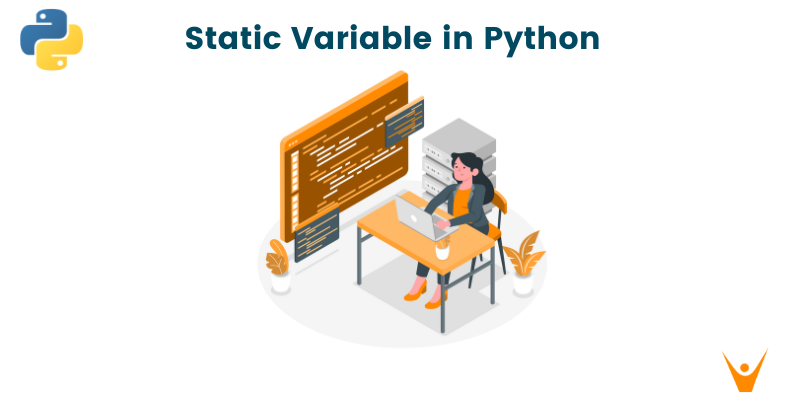Python Static Variables and Methods: Class-Level Attributes
Learn how to define and use class variables and methods in Python to efficiently manage shared data and functionality within your classes.
Learn how to define and use class variables and methods in Python to efficiently manage shared data and functionality within your classes.
In Python, understanding the distinction between class variables, instance variables, and static methods is crucial for writing well-structured and efficient code. This distinction becomes particularly important when you need to manage attributes and behaviors shared among instances of a class versus those unique to each instance. Let's delve into the world of static variables and methods, exploring their nuances and practical applications.
Let's break down static variables and methods in Python.
Understanding the Basics
__init__ method). Each instance of the class gets its own copy of these variables.Illustrative Example
class Dog:
breed = "Canine" # Class variable
def __init__(self, name):
self.name = name # Instance variable
@staticmethod
def bark():
return "Woof!" In this example:
breed is a class variable. All dogs share the breed "Canine."name is an instance variable. Each dog object (e.g., sparky = Dog("Sparky")) will have its own unique name.bark() is a static method. It simply returns "Woof!" and doesn't depend on any specific dog's breed or name.Key Points
Dog.breed) or an instance of the class (e.g., sparky.breed).@staticmethod. They don't have access to self (the instance) or cls (the class) by default.When to Use Static Methods
Simulating Static Variables Inside Functions
While Python doesn't have static variables within functions in the traditional sense, you can mimic their behavior using mutable data structures like lists or dictionaries:
def count_calls():
count_calls.call_count += 1
return count_calls.call_count
count_calls.call_count = 0 In this example, count_calls.call_count acts like a static variable, retaining its value across multiple calls to the count_calls function.
This Python code defines a class "Dog" to illustrate object-oriented programming concepts. It demonstrates class variables, instance variables, static methods, and instance methods. The example shows how to create instances of the class, access and modify variables, and call methods. It also includes a simulation of static variables within a function using a function attribute. The code provides a clear and concise example of how these concepts work in Python.
class Dog:
# Class variable (shared among all instances)
breed = "Canine"
def __init__(self, name):
# Instance variable (unique to each instance)
self.name = name
# Static method (doesn't depend on instance or class variables)
@staticmethod
def bark():
return "Woof!"
# Instance method (can access and modify instance variables)
def describe(self):
return f"{self.name} is a {self.breed}"
# Create two instances of the Dog class
sparky = Dog("Sparky")
buddy = Dog("Buddy")
# Accessing class variable
print(Dog.breed) # Output: Canine
print(sparky.breed) # Output: Canine
print(buddy.breed) # Output: Canine
# Accessing instance variables
print(sparky.name) # Output: Sparky
print(buddy.name) # Output: Buddy
# Calling the static method
print(Dog.bark()) # Output: Woof!
print(sparky.bark()) # Output: Woof!
# Calling the instance method
print(sparky.describe()) # Output: Sparky is a Canine
print(buddy.describe()) # Output: Buddy is a Canine
# Modifying a class variable through the class
Dog.breed = "Domesticated Canine"
print(sparky.breed) # Output: Domesticated Canine
print(buddy.breed) # Output: Domesticated Canine
# Modifying a class variable through an instance
sparky.breed = "Golden Retriever"
print(sparky.breed) # Output: Golden Retriever
print(buddy.breed) # Output: Domesticated Canine
print(Dog.breed) # Output: Domesticated Canine
# Simulating static variables inside a function
def count_calls():
count_calls.call_count += 1
return count_calls.call_count
count_calls.call_count = 0 # Initialize the "static" variable
print(count_calls()) # Output: 1
print(count_calls()) # Output: 2
print(count_calls()) # Output: 3Explanation:
Class Definition: We define a class named Dog with a class variable breed, an initializer (__init__) to set the instance variable name, a static method bark, and an instance method describe.
Instance Creation: We create two instances of the Dog class: sparky and buddy.
Accessing Variables and Methods: We demonstrate how to access class variables, instance variables, static methods, and instance methods.
Modifying Class Variables: We show how modifying a class variable through the class name affects all instances, while modifying it through an instance creates a new instance variable without affecting other instances or the original class variable.
Simulating Static Variables in Functions: We define a function count_calls that simulates a static variable call_count to count the number of times the function is called.
This comprehensive example illustrates the concepts of static variables, instance variables, static methods, and how they behave in Python.
General:
@staticmethod decorator and the concept of "static" in Python are primarily about code organization and readability. They signal that a method is a utility function related to the class but doesn't rely on instance-specific data.@classmethod) or even module-level functions instead of static methods, depending on whether you need access to class-level information.Class Variables:
Static Methods:
self or cls: Because static methods don't operate on instances or the class itself, they don't receive self (the instance) or cls (the class) as arguments by default.Dog.bark()) or an instance of the class (e.g., sparky.bark()), although using the class name is generally preferred for clarity.Simulating Static Variables in Functions:
Best Practices:
Additional Considerations:
| Feature | Description | Access | Example |
|---|---|---|---|
| Class Variable | Shared attribute among all instances of a class. | Class name (e.g., Dog.breed) or instance (e.g., sparky.breed) |
breed = "Canine" |
| Instance Variable | Unique attribute for each instance of a class. | Instance only (e.g., sparky.name) |
self.name = name |
| Static Method | Utility function within a class, independent of specific instances. | Class name (e.g., Dog.bark()) |
@staticmethod\ndef bark():\n return "Woof!" |
Key Points:
self (instance) or cls (class) by default.When to Use Static Methods:
Simulating Static Variables in Functions:
Static methods and class variables play distinct roles in Python classes. While class variables provide a way to share attributes among all instances of a class, static methods offer a mechanism to organize utility functions that are related to the class but don't directly depend on instance-specific data. Understanding the distinction between these concepts, along with instance variables and methods, is essential for writing well-structured and efficient object-oriented code in Python. By leveraging these features appropriately, you can create more organized, maintainable, and robust Python programs.
 Class or Static Variables in Python - GeeksforGeeks | A Computer Science portal for geeks. It contains well written, well thought and well explained computer science and programming articles, quizzes and practice/competitive programming/company interview Questions.
Class or Static Variables in Python - GeeksforGeeks | A Computer Science portal for geeks. It contains well written, well thought and well explained computer science and programming articles, quizzes and practice/competitive programming/company interview Questions. Static variables and methods in Python | Bringing a bit of C++ into Python.
Static variables and methods in Python | Bringing a bit of C++ into Python. What is a Static Variable in Python? - Scaler Topics | Learn about static variables in Python along with syntax, examples, and code explanations on Scaler Topics.
What is a Static Variable in Python? - Scaler Topics | Learn about static variables in Python along with syntax, examples, and code explanations on Scaler Topics. Static Variable in Python (How to Create and Access it?) | Find out everything about static variables in python. Learn how to create and access a static variable in python.
Static Variable in Python (How to Create and Access it?) | Find out everything about static variables in python. Learn how to create and access a static variable in python.